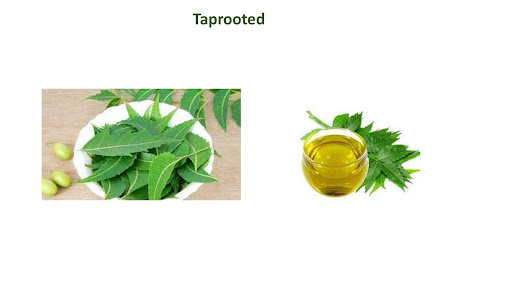Organic Garden Pesticides
Related Post - Garden Ideas
It would be nice if the garden didn’t need pesticides, but problems do occur. If left unattended, pests can destroy leaves, flowers, and fruits and spread diseases quickly. When a problem is severe enough to require control, first achieve the least toxic option. Whether it is the removal of pests by hand or the use of the organic pesticide mentioned here.
Remember, a pesticide is organic so it does no harm. Always follow label directions and remember not to overdo it even with organic ingredients.
Take care of your garden carefully and try to find problems in advance. If you practice good integrated pest management with a wide range of plants, good growing conditions, birds, and natural predators such as beneficial insects and healthy soil, you will not have to reach for frequent sprays.
Insecticide soap
Ingredients
Application: Insecticide soap should be in direct contact with the pest. Once dry it will no longer work2
How it works: The fatty acids in the soap penetrate the outer covering of the insect and cause the cells to decompose.
Pros:
One of the safest pesticides
Non-toxic to animals
No residue
You can use it on vegetables until harvest
Cons:
Plants can be burned or crushed. Do not use in full sun or at high temperatures.
Does not work well for adult beetles that have created a hard hole.
Precautions: Check the label for specific plants that are sensitive to pesticide soap.
Diatomaceous earth
Ingredients: Silica from the skeletons of small aquatic animals.4
Usage: Powdered powder on plants. Also available in wet powder or spray form.
How it works: Absorbs fats and oils from the insect's exoskeleton, which dries and dies. The sharp edges help to pierce the insect
Pros: Will be active for a long time until it dries.
Bacillus thuringiensis
BT (Bacillus thuringiensis)
Ingredients: Bacteria. There are more than 80 types of BT used as pesticides
Related Post - Garden Ideas
Usage: Usually available in the form of a plant spray or dust powder. It must be eaten by the targeted insect
How it works: BT is a stomach poison. It releases toxins in the stomachs of vulnerable insects that cause them to stop eating and starve
Pros: BT strains are very host-specific
Cons: Slow acting. It can take days for the insect to stop eating completely and die. Breaks down quickly, especially in sunlight. Can kill 'good insects' like butterfly larvae.7
Precautions: Follow label directions and do not overuse it
Neem
Ingredients: There are 2 ingredients from the seed kernels of the neem tree, Azadirachtin and Salanin.
Related Post - Garden Ideas
Usage: Spray on plant leaves
How it works: Disrupts the hormonal system of insects and prevents them from growing to maturity.
Pros: Non-toxic to humans
Cons: Washes in the rain. Slow acting. Breaks in sunlight. Indiscriminate pesticide
Precautions: Keep pets away from treated leaves until dry
Horticultural oil
Ingredients: Highly refined petroleum oil11
Application: Mix with water and spray the foliage
How it works: Coats suffocate or disrupt their diet12
Pros: Low toxicity to humans, pets, or birds. No toxic residue
Cons: Very effective against soft-bodied insects. 13 Blue-green plants can temporarily lose their blue color.
Precautions: There are several standards. You need to use the right one for the spraying season
Pyrethrins
Ingredients: Derived from Chrysanthemum cinerariifolium15
Usage: Commonly found in powder form and dusted on leaves.
How it works: Poisoning the insect, causing rapid death
Pros: Quick acting. Low toxicity to animals. Decreases within a day.
Cons: Broad-spectrum pesticide. Kills any insect. Highly toxic to bees16
Precautions: Use with caution only when it is difficult to kill insects
Sabadilla
Ingredients: Sapatilla lily seeds17
Application: Comes as a good powder and is used as a spray 18
How it works: Stomach acts as a poison 19
Pros: Very effective against real bugs (members of the order Hemiptera)
Cons: Too harmful to bees Cleanliness.20
Very irritating to the mucous membranes of mammals
Precautions: Use as a last resort
Rotenone
Ingredients: Derived from the roots of tropical legumes
Application: Dust on the plant
How it works: Inhibits cellular processes, Insects lose oxygen in their tissue cells
Pros: Low residual effect. Breaks down quickly in sunlight
Cons: Broad-spectrum pesticide. Mild toxicity to humans when ingested.
Precautions: When the bees are less active, apply in the evening. The "wait" interval before harvest can be specified.
Potassium bicarbonate
Ingredients: Potassium bicarbonate is usually combined with a substance to improve the spread and coverage of horticultural oil and/or leaves. There are commercially available products like GreenCure® and Kaligreen, or you can make your own.22
Usage: Spray at the first sign of illness or use as a pre-infection vaccine
How it works: It is not yet clear, but bicarbonates can damage the cell wall and create a pH that is not conducive to fungal growth. The effect is immediate
Pros:
As a preventative measure, it lasts for 2 - 3 weeks
You can use it on vegetables until harvest
Cons: Can burn plants, especially if used in full sun
Precautions: Check the label on a small area before spraying the entire plant
















3 Comments
Wonderful post. your post is very well written and unique. Thank you for sharing this post here. pls visit our website San Antonio roach control services
ReplyDeleteThe article, which you have shared here about magnesium sulphate Mg-9.5% . Your article is very informative and useful for enhancing knowledge. Thanks for sharing this article here.
ReplyDeleteWell-written. Useful and informative. Keep up the good work! and also check this out pest control singapore. Thank you.
ReplyDelete